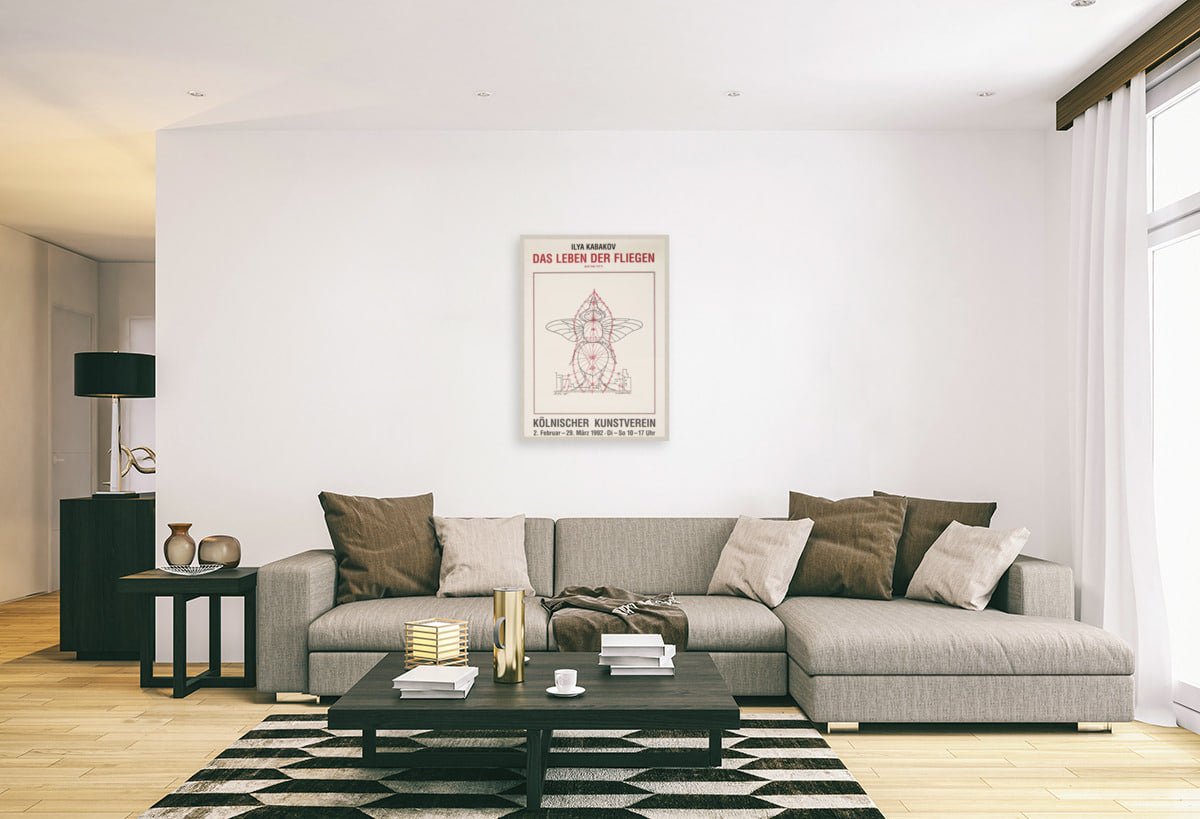Hedonism Gallery
Ilya Kabakov - The Life of flies (1992)
Ilya Kabakov - The Life of flies (1992)
Import duties, taxes, and fees are the responsibility of the recipient and payable upon delivery.
Scorte ridotte: ne restano 1
Impossibile caricare la disponibilità di ritiro
- Make Offer
- Verified
- Worldwide Shipping
- Poster for the Cologne KV exhibition
- Title: The Life of Flies
- 1992
- Color offset on strong paper
- 33.4 in x 23.6 in (85 cm x 60 cm)
- slight signs of age and treatment
CONCEPT OF THE INSTALLATION
A museum of local history in a provincial city: Oh, how much this says to each visitor, especially to a visitor from out of town, not knowing how to kill time, what to do with himself, not knowing anyone in the city, wandering around strange streets, who accidentally sees before him a plaque with the name of the museum on it! An old wing that hasn’t been repaired for a long time now, an old door, depressing silence in the entrance and either an employee or a guard stunned by the unexpected appearance of a visitor. Small halls, more like rooms (the museum is usually located in an old two-story merchant’s estate) semi-darkness, cleanly swept floors. Small windows with thick old blinds sparingly let in light; only your steps along the old floor-boards or the steps of another coincidentally wandering visitor can be heard loudly. But there is, even more, anguish here than on the empty and hot street. There are displays along the walls and in the center which invoke boredom and desperation by their mere appearance, an appearance of dead glass boxes occupying a small space. And it’s as though the exhibits displayed in them have been collected here specifically in order not to chase away the boredom, but to take it to its extreme: rocks of different sizes and colors, the horn of a goat, or perhaps of a ram. The exact same kind of horn is mounted to the wall opposite. An iron spoon, broken at the very handle. Three old, dark, half-broken clay pots. From the anguish and spasms of desperation seizing you, you walk, run, rush into the next hall. A tree stump painted gray is standing in a box filled with cotton. A rabbit is sitting on the tree. A branch of some tree is attached to the wall. The inscription: ‘Cherry orchards occupy 126 thousand hectares in the Lenin Region in 1954; 189 thousand hectares in 1955 …’ In the display case on the second shelf, there is a ‘budyonovka hat,’ a pointed helmet worn by Red Army Cavalrymen during the Civil War Years, 1918-1921. Below, on another shelf for some reason is a small black automobile. Again there is a door into the next room. But you don’t have the strength to go on, there is none left. You are at the very peak, at the limit of anguish.
… But in other, more well-equipped, better-illuminated museums, such as technical, entomological, paleontological, ‘history of your own homeland,’ – dense desperation also seizes you from the first second, not permitting you to concentrate on anything. You are in a cemetery, but the remains have not been covered over, they have not been buried. You are among small, tiny, or just the opposite, large, enormous pieces of past life which you could care less about. Next to these remains are drawings and texts telling what all of this relates to, what it used to look like in its past life. But you don’t believe it, you can’t fully believe, standing here, in the reality of this past. Perhaps if you were there, in the deserts, forests, mountains, where all of this was dug up, then your imagination could start to work and the miracle of resurrection could actually occur. But here, in these long and deserted halls, in this ‘kingdom of the dead,’ they don’t come to life, but rather you yourself become an impotent, meaningless corpse among them.
Share




Have questions or want a special price? Write to us — we’re here to help.
We will get back to you as soon as possible. If you don’t get a response within 12 hours, please check your Spam folder.




